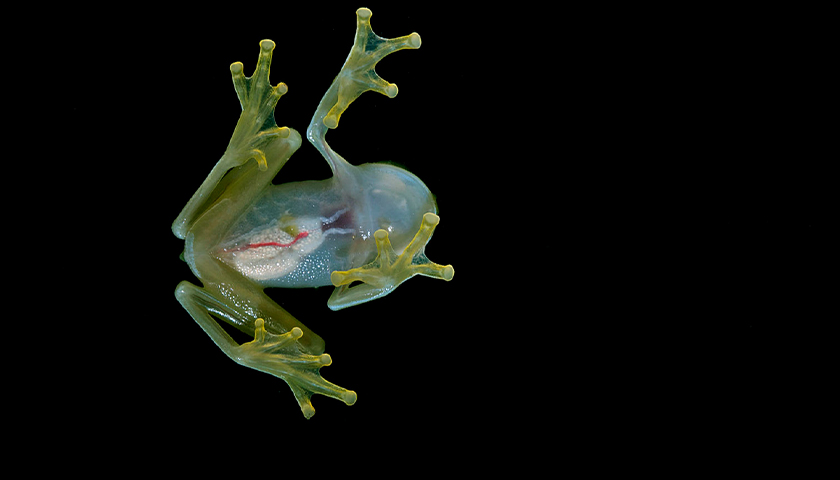by Ross Pomeroy
A team of American and Ecuadorian scientists has discovered two new species of glassfrogs in the Tropical Andes of Ecuador. Glassfrogs are known for their translucent undersides which reveal their insides.
The Tropical Andes are considered the greatest of all biodiversity hotspots. Running along the western coast of South America, the region includes forests, grasslands, and mountainous terrains across altitudes from 1,600 to 16,000 feet! Many of the tens of thousands of plant and animal species that dwell there can’t be found anywhere else in the world.
It was undoubtedly this reputation that attracted the researchers to the area back in 2015, when they initially found the new species of glassfrogs. Juan Guayasamin, a Professor at Universidad San Francisco de Quito in Ecuador, and his colleagues have spotted the amphibians numerous times since then, but still, they haven’t been easy to find. Hyalinobatrachium mashpi and H. nouns, as Guayasamin has dubbed the frogs, typically occupy lofty vegetation along steep streams and rivers in the high-elevation cloud forests. Both have beautiful yellow and green coloration on their backs with clear spots. Most individuals were found on the undersides of leaves, where females lay their eggs, and where both male and female partners remain to watch over them.
Sadly, Guayasamin and his colleagues already recommend that the new species be listed as endangered, as their only-known habitat is small and declining. The wet, temperature conditions that make the Andean cloud forests a veritable paradise for amphibians also makes them tempting to farmers.
“The main threats for this species are habitat loss and contamination due to cattle ranching, agriculture, and mining activities,” the researchers write, adding “These glassfrogs and many other yet-to-be-discovered Andean species highlight the dire need for effective conservation measures—especially in northwestern Ecuador.”
– – –
Ross Pomeroy contributes to RealClearScience.
Photo “glass frog” by Geoff Gallice CC BY 2.0.




